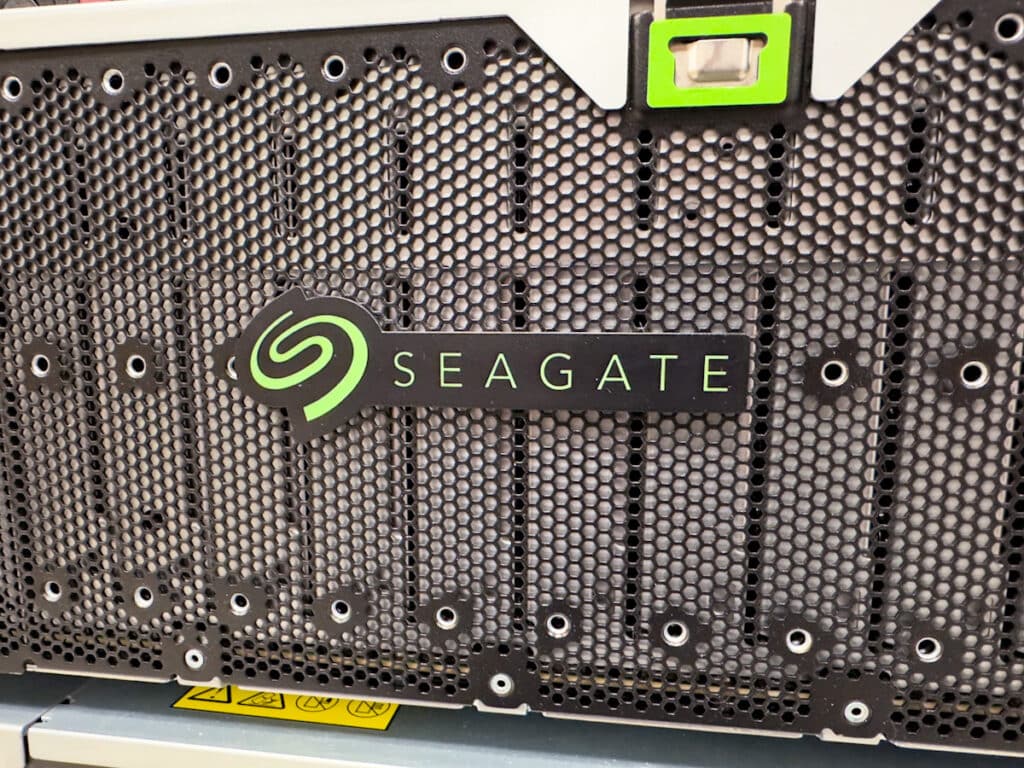Recently, Brian took a trip to Longmont, Colorado, to look at the Seagate Exos CORVAULT, a high-density storage platform five years in the making! We followed up his visit by posting a deep dive into the CORVAULT, looking at everything from unboxing to setup and highlighting the many features associated with this technology.

Brian’s guest on this show is Erik Salo, Seagate’s vice president of product and business marketing. Erik has been with Seagate for over ten years and has had his hands on everything from distribution, storage, and cloud-edge technology. With that kind of background, Erik was the perfect choice to get some background on this new storage platform.
The concept for CORVAULT was hatched during a meeting, thinking about all the sophisticated and innovative technology used in building Seagate products. Erik believed that, instead of thinking of storage in single 3.5-inch increments, it might be time to think in terms of hundreds of those 3.5-inch products in a high-density platform. The discussion moved to cloud storage, and the numbers just kept growing.
This is a podcast with plenty of detail about what goes into creating a product like CORVAULT. It is certainly worth a view, but if you need just to hit some highlights, the video is transcribed below.
00:00 Introduction (recorded on-site in Longmont, CO)
- CORVAULT background
- Think about storage differently
- How to manage those disks
- Focus
- Erasure encoding
- Failure management
05:00 Dramatic changes in scale
- Server overhead
- Server management
- Inefficiency when making all products the same
- Built for resiliency
- Costs
- Erik’s history in replacing drives
- Smart drives
10:00 Smart drives know
- Servers are smart enough to know what capacity remains
- Self-resilient systems
- Who makes up the customer population
- Enterprise
- Cloud
- Staying focused
- How do customers decide on storage technology
- What do they want to do
- How do they want to do it
- How much will it cost
- What hardware is available
15:00 Building out infrastructures in the lab
- Focus on core competence
- How software uses storage
- Deciding what goes into a system
- Keep it simple
- Use cases for specific products
- What if a customer doesn’t need 106 drives
- A smaller unit with all the same features
20:00 Bigger, Bigger, Bigger
- From floppies to Terabytes
- How much of the data is useful
- Surveillance videos
- Sophistication
25:00 Helping customer figure out what’s next
- Seagate is an adopter of all the technology
- AI
- High volume manufacturer
- Components are still hard to get
- Companies stopped ordering during COVID
- Seagate has a long-term view
30:00 How to get customers interested
- Three step process
- Reference ArchitectureWhat about flash
- Provide demo unit
- Performance of CORVAULT
- What is the system tuned for
- What about flash
- Managing supply chain
35:00 Conclusion
Subscribe to our podcast:



 Amazon
Amazon